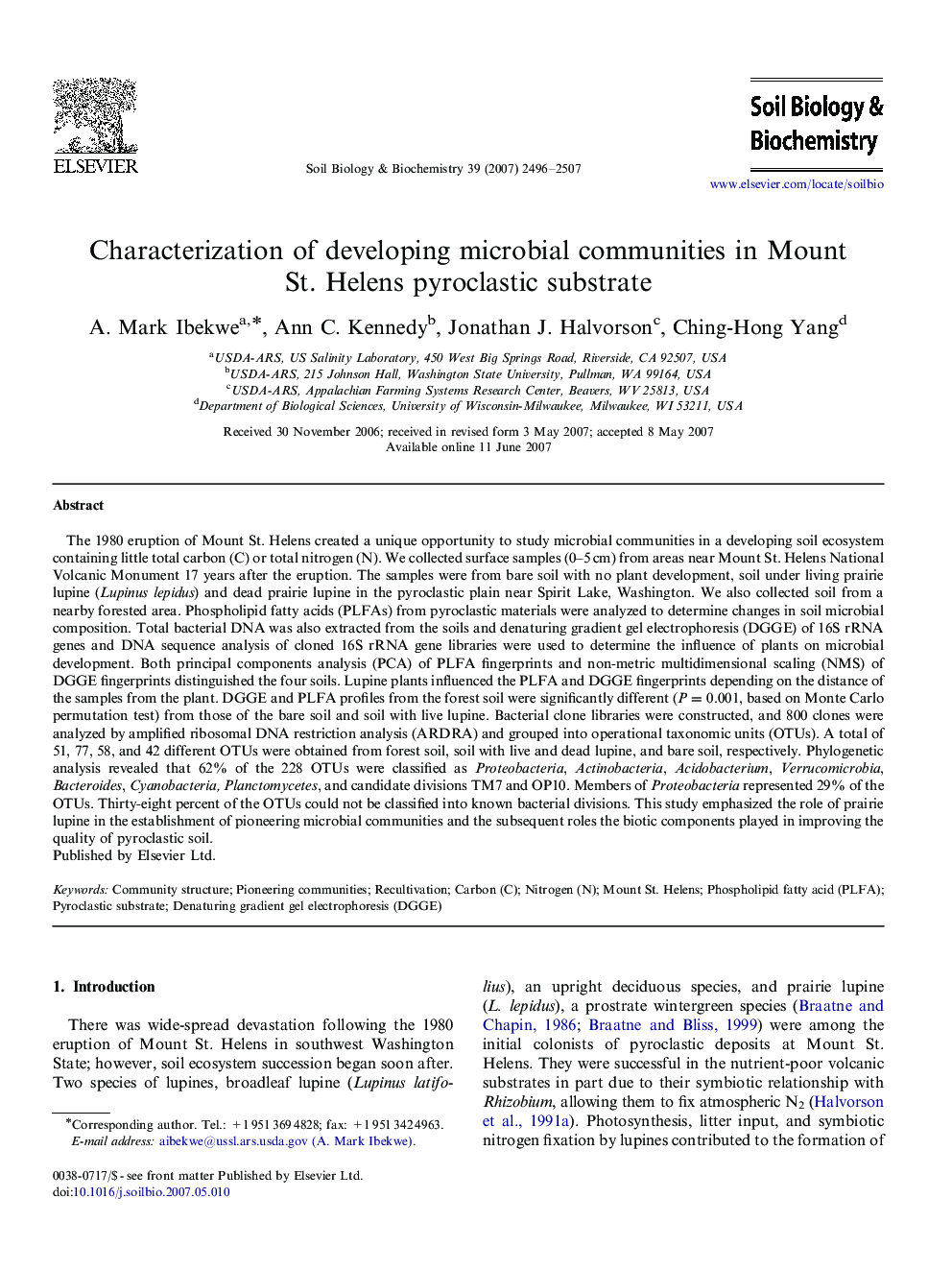| کد مقاله | کد نشریه | سال انتشار | مقاله انگلیسی | نسخه تمام متن |
|---|---|---|---|---|
| 2025913 | 1070013 | 2007 | 12 صفحه PDF | دانلود رایگان |

The 1980 eruption of Mount St. Helens created a unique opportunity to study microbial communities in a developing soil ecosystem containing little total carbon (C) or total nitrogen (N). We collected surface samples (0–5 cm) from areas near Mount St. Helens National Volcanic Monument 17 years after the eruption. The samples were from bare soil with no plant development, soil under living prairie lupine (Lupinus lepidus) and dead prairie lupine in the pyroclastic plain near Spirit Lake, Washington. We also collected soil from a nearby forested area. Phospholipid fatty acids (PLFAs) from pyroclastic materials were analyzed to determine changes in soil microbial composition. Total bacterial DNA was also extracted from the soils and denaturing gradient gel electrophoresis (DGGE) of 16S rRNA genes and DNA sequence analysis of cloned 16S rRNA gene libraries were used to determine the influence of plants on microbial development. Both principal components analysis (PCA) of PLFA fingerprints and non-metric multidimensional scaling (NMS) of DGGE fingerprints distinguished the four soils. Lupine plants influenced the PLFA and DGGE fingerprints depending on the distance of the samples from the plant. DGGE and PLFA profiles from the forest soil were significantly different (P=0.001, based on Monte Carlo permutation test) from those of the bare soil and soil with live lupine. Bacterial clone libraries were constructed, and 800 clones were analyzed by amplified ribosomal DNA restriction analysis (ARDRA) and grouped into operational taxonomic units (OTUs). A total of 51, 77, 58, and 42 different OTUs were obtained from forest soil, soil with live and dead lupine, and bare soil, respectively. Phylogenetic analysis revealed that 62% of the 228 OTUs were classified as Proteobacteria, Actinobacteria, Acidobacterium, Verrucomicrobia, Bacteroides, Cyanobacteria, Planctomycetes, and candidate divisions TM7 and OP10. Members of Proteobacteria represented 29% of the OTUs. Thirty-eight percent of the OTUs could not be classified into known bacterial divisions. This study emphasized the role of prairie lupine in the establishment of pioneering microbial communities and the subsequent roles the biotic components played in improving the quality of pyroclastic soil.
Journal: Soil Biology and Biochemistry - Volume 39, Issue 10, October 2007, Pages 2496–2507